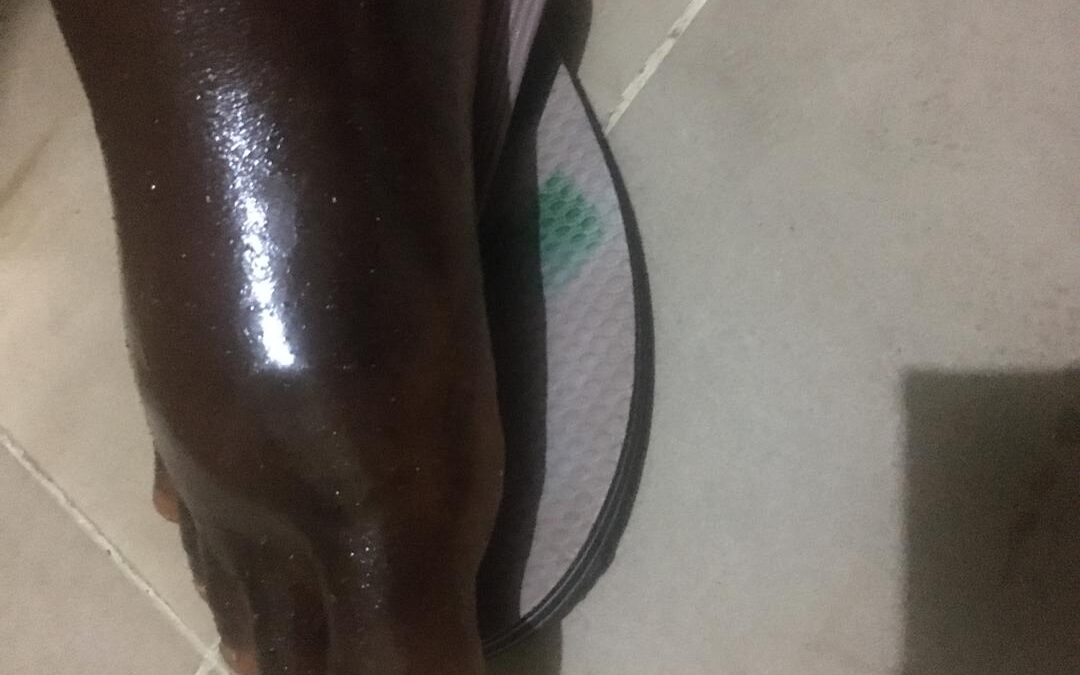What is cellulitis? Cellulitis is a common, surface and sometimes painful bacterial epidermal (skin) infection that if left unattended to, it can affect lymph nodes and bloodstream. Depending on the span, it initially appears reddish, swollen area that feels hot and tender to the touch, the redness and swelling can spread quickly. Cellulitis often affects the skin of lower legs although the infection can occur anywhere on a person’s body including face. This health post will unravel all the basic to know and possible prevention of cellulitis infection.
Noticeable signs (symptoms) of cellulitis
As epidermal infection, the symptoms greatly varies depending on the days of infection and its spread on the skins, the signs are grouped into:
Mild conditions symptoms of Cellulitis include:
- Pain and tenderness in the affected area
- Redness or inflammation of your skin
- A skin sore or rash that grows quickly
- Tight, glossy, swollen skin
- A feeling of warmth in the affected area
- An abscess with pus
- Fever
If the condition gets serious, the symptoms change, they are listed below:
More serious cellulitis symptoms include:
- Shaking or Shivering
- Usual and abnormal chillness
- Feeling ill
- Excessive Fatigue
- Dizziness and lack of proper orientation
- Lightheadedness
- Skeletal Muscle aching
- Excessive, profuse and abnormal sweating
However, if the infection left unattended to and started spreading on the skin, the following symptoms will be seeing:
- Drowsiness
- Lethargy and general body weakness
- Blisters that ooze or crust
- Red streaks
Causes of Cellulitis
Cellulitis occurs when certain types of bacteria enter the skin through a cut or crack. Staphylococcus and Streptococcus bacteria can cause this infection. The infection can start in skin injuries such as:
- Cuts
- Bug bites
- Surgical wounds that is poorly handled
Other means of contracting Cellulitis?
- Although, Cellulitis has not been discovered to be contagious, it’s possible to contract cellulitis if you have an open cut on your skin that touches an infected person’s skin.
- You’re more likely to contract cellulitis if you have a skin condition like eczema or athlete’s foot. Bacteria can enter your skin through cuts that these conditions cause.
- A weakened immune system also increases vulnerability to this infection because it can’t protect you as well against the infection.
Possible Prevention Methods

The best to do is to play safe by avoiding the infection even if you have a cut or crack on your body, therefore, medically, the following can be done in preventing Cellulitis
- Clean any cut or break in your body (if you have) by applying antibiotic ointment
- Cover your wound with bandage or cotton wool and plaster
- Frequently changes the bandage by taking it to the hospital until scab is formed
- Watch out for the infection symptoms such as redness, drainage, or usual pain
- Adhere strictly to the precautions if you have poor circulation or prone to the infection
In case, there is no cut or crack in your, observe the following
- Keep your skin moist to prevent cracking
- Promptly treat conditions that cause cracks in the skin, like athlete’s foot
- Wear protective equipment (foot wear) when you work or play sports
- Inspect your feet daily for signs of injury or infection
Risk Factors Associated with Cellulitis
Factors that can increase the risk of cellulitis include:
- Age: Cellulitis is more likely to occur during or after middle age.
- Obesity: Cellulitis is more common among people with excess weight or obesity.
- Leg issues: Swelling (edema) and ulceration can increase the risk of developing the infection.
- Previous cellulitis: Anyone who has had cellulitis before has an 8–20% chance of it returning, research indicates, and the infection can reoccur several times within a year.
- Exposure to environmental factors: These include polluted water and some animals, including fish and reptiles.
- Other skin issues: Chickenpox, eczema, athlete’s foot, abscesses, and other skin conditions can increase the risk of bacteria entering the body.
- Lymphedema: This can lead to swollen skin, which can crack and allow bacteria to enter.
- Other conditions: People with liver or kidney disease have a higher risk of developing cellulitis.
- Diabetes: If a person is not able to manage their diabetes effectively, problems with their immune system, circulation, or both can lead to skin ulcers.
- Weakened immune system: People may have this if they are older, if they have HIV or AIDS, or if they are undergoing chemotherapy or radiotherapy.
- Circulatory problems: People with poor blood circulation have a higher risk of infection spreading to deeper layers of the skin.
- Recent surgery or injury: This increases the risk of infection.
- Intravenous drug use: Injecting drugs, especially with used needles, can lead to abscesses and infections under the skin, increasing the risk of cellulitis.
Our recommendations at Adebayo Living Tower Hospital (ALTH)
Absolutely, if you notice any of the above-listed symptoms or you are probably being diagnosed of the infection, there is no better time than now, book an appointment with us now. We recommend the following:
- Swiftly seek medical attention if you see any symptoms
- Maintain good and proper hygiene
- Avoid leaving your wound open or unattended to
- Avoid walking barefooted at a dangerous place or when playing football i.e. put on your foot-wear
- Get a quick treatment on eczema, diabetes, or dermatitis because, they weaken immune system, hence, making you more prone to cellulitis.

Recent Comments